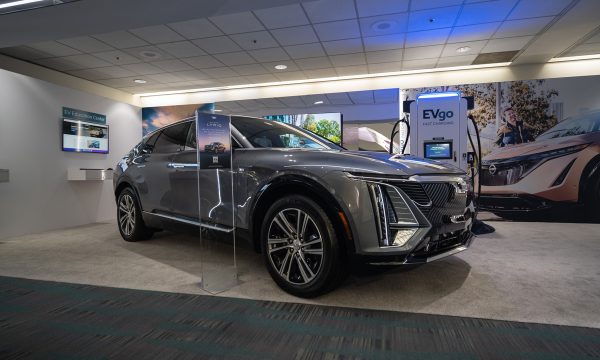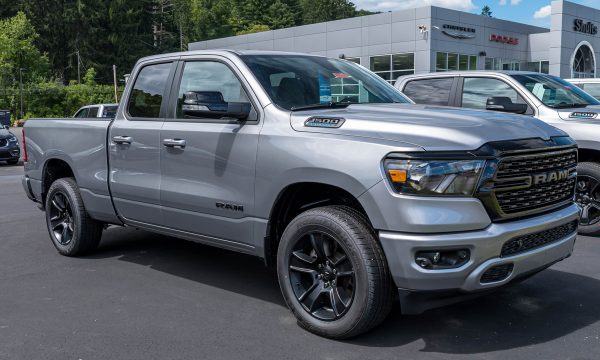Car companies are increasingly open to partnerships to help spur new ideas
This year’s consumer electronics show was more about vehicle capability than anything else. The auto industry barn doors have been propped wide open, not to let what’s inside out but rather to allow for the new to enter in.
We grew up in an era where new vehicle design, assembly and distribution were once controlled solely by vehicle brand owners, their supplier base and franchised dealers. Not so much any more. At least that was the message at the show.
The days of the Big Three, Japanese, European, Korean automaker dominance of new vehicle design, assembly and distribution is under attack from Silicon Valley, MIT, Canadian Universities and Colleges, China Euro Vehicle Technology AB (CEVT), and hundreds, perhaps thousands of other innovation pockets located all over the world.
Add to that the EV mandates of China, India and other countries and we see a transformation driven by new technologies right before our eyes.
For some countries that transformation is somewhat simpler since their legacy systems are not as ingrained in their economies to the extent they are in North America, Europe and some other parts of the world.
All that is to say, the impetus and pace of development will not be uniform across the planet. Some economic pockets will develop faster as their economies grow and prosper, while others will be slower, as regulation combined with legacy thinking and infrastructure take much longer to react allowing change to unfold at a slower pace. I suspect the more developed the economy, the harder it will be, but only time will tell.
There is certainly no shortage of predictions from both those inside the industry and outside. From my perspective much of the inside discussions are initiated from a defensive position driven by reaction to outsiders wanting to not only disrupt but grab a piece of what is unmistakably one of the largest revenue generating industries. Driven by the consumers’ insatiable quest for technology, traditional automotive brands are playing catch up. Or are they really?
Traditional automotive brands are inventing, being creative and in most cases delivering technology solutions that are appealing to the consumer. Keeping in mind that this is a nine-inning game and we are at the top of the first inning, one could argue that traditional brands are right where they should be.
Of interest to note is the number of partnerships or joint initiatives currently announced by traditional automotive companies. Add to that the investment in new technologies by companies like GM, Ford, Volvo etc. With those investments comes new opportunities, creativity and innovation. Hopefully some of the ventures will drive profitability, employment and long-term financial stability for some of the world’s most famous brands.
Behind the curtains, ideas are being hatched that might provide future vehicle drivers with enhanced vehicle access options not available to the mass market today. Some of the ideas are at the prototype stage and will likely undergo several iterations of complexity as simpler more comprehensive options are made available to consumers, first in controlled environments then to larger geographic implementations.
Innovation is happening on many fronts but from my vantage point the common thread is technology. Innovation will ultimately morph to become the enabler. Innovation will not just be a competitive advantage it will become part of the normal, demanded and expected by all forms of users.
Traditional automotive brands are inventing, being creative and in most cases delivering technology solutions that are appealing to the consumer.
Pundits, some informed and some not, talk of sweeping changes. From a practical standpoint, governments will control the pace of change as they seek to regulate on behalf of all constituents for the good of society. A pretty lofty goal if you ask me.
Consumers will force change and want to control the speed of change. We see examples of this now, where certain initiatives are being introduced by entrepreneurs only to have local governments, sometime late to the game, intervene in the spirit of regulation and protection.
From a consumer’s’ standpoint, many simply need to access kilometers. Ownership has become expensive for many as they battle between affordability and need. The idea of vehicle sharing could have real legs in certain economic pockets. No monthly car payment, no monthly/ daily parking fees, no insurance, no gasoline and no vehicle repairs is definitely appealing to some consumers.
Also of possible interest could be subscription services. We subscribe for cell phones, cable TV, satellite radio, computer software etc., why not do the same thing with vehicles, especially when the vehicle becomes commoditized?
Many of those innovators I referred to earlier are devoting huge amounts of time and investment to invent how such a business model will operate. In many ways it’s the fleet management business on steroids, possibly with a revenue model based on usage as opposed to capital cost.
Revenues might not be limited to a cost plus markup approach but rather a usage model with a fee per kilometer and time components with the potential to general revenues that eclipse current levels.
New risk models will need to be developed to ensure all perils are adequately provided for in the subscription, which likely means that costs will be high on a per km or time basis. The gaming of the system comes from balancing the cost of usage versus the costs of ownership.
Make no mistake, vehicle ownership is not disappearing any time soon. I believe as new subscription concepts are introduced, their adoption will increase over time. Competitive response will be altered to create a new competitive landscape designed to give consumers choice.
Similar to today where consumers can own, lease, rent, borrow, pay-per-use etc., over the coming decades, new business models will emerge to split the transportation pie into more pieces. Innovation will follow the money, so will competitive response.
Just like in many cities where Uber and Lyft have operations, taxis are reinventing themselves to operate more like Uber and Lyft as traditional businesses respond. Once a first mover advantage, now serves to elevate the bar for all. At the end of the day, this is good for consumers.
As long as the economy stays hot and no world catastrophes take the steam out of the Canadian economy, 2018 should see a continuation of the dialogue surrounding product development, design and distribution.
These are exciting times and current dealers need to be more than just part of the conversation. As I have said before, there is no more important time in history to align yourself with the brand you represent.
Only through complete goal congruency, a consistent brand promise, and execution excellence will dealers successfully come out on the other side.
Our businesses in the future might look different than they do today but they will still be our businesses and we will be proud to hold our heads high.












